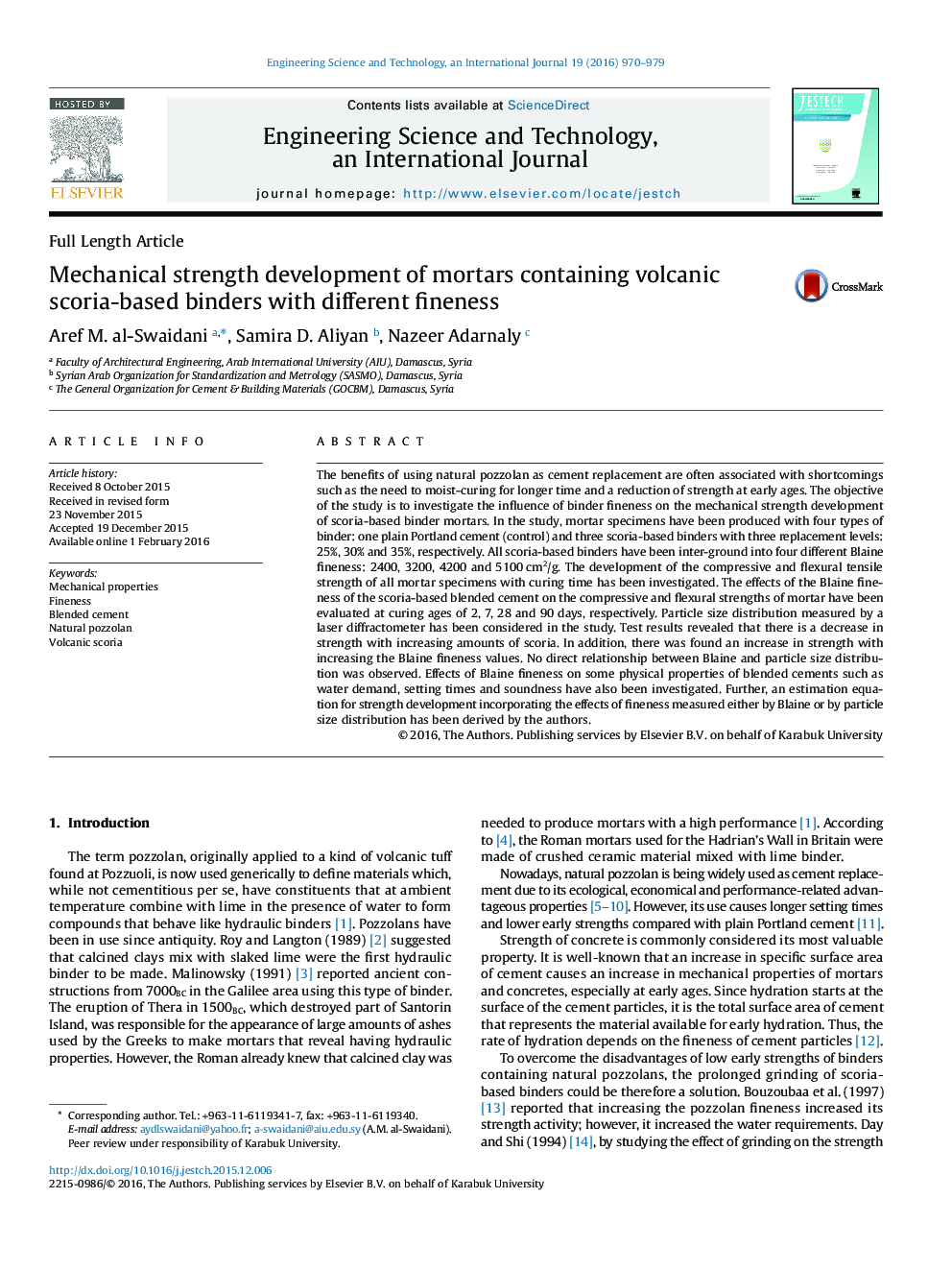| Article ID | Journal | Published Year | Pages | File Type |
|---|---|---|---|---|
| 477493 | Engineering Science and Technology, an International Journal | 2016 | 10 Pages |
The benefits of using natural pozzolan as cement replacement are often associated with shortcomings such as the need to moist-curing for longer time and a reduction of strength at early ages. The objective of the study is to investigate the influence of binder fineness on the mechanical strength development of scoria-based binder mortars. In the study, mortar specimens have been produced with four types of binder: one plain Portland cement (control) and three scoria-based binders with three replacement levels: 25%, 30% and 35%, respectively. All scoria-based binders have been inter-ground into four different Blaine fineness: 2400, 3200, 4200 and 5100 cm2/g. The development of the compressive and flexural tensile strength of all mortar specimens with curing time has been investigated. The effects of the Blaine fineness of the scoria-based blended cement on the compressive and flexural strengths of mortar have been evaluated at curing ages of 2, 7, 28 and 90 days, respectively. Particle size distribution measured by a laser diffractometer has been considered in the study. Test results revealed that there is a decrease in strength with increasing amounts of scoria. In addition, there was found an increase in strength with increasing the Blaine fineness values. No direct relationship between Blaine and particle size distribution was observed. Effects of Blaine fineness on some physical properties of blended cements such as water demand, setting times and soundness have also been investigated. Further, an estimation equation for strength development incorporating the effects of fineness measured either by Blaine or by particle size distribution has been derived by the authors.
